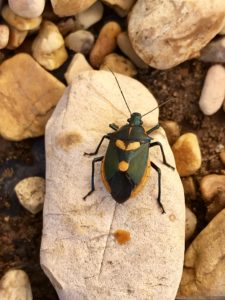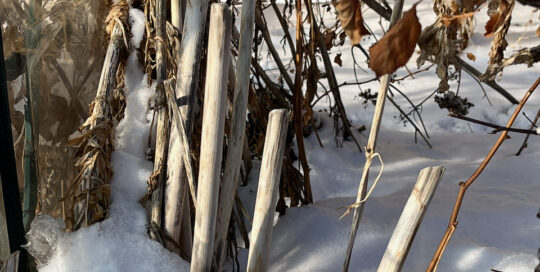Stop the Spread of the Asian Longhorned Beetle
Views: 3144

China’s in the news a lot lately about what they send over to us, and one of their latest exports looks like something out of a horror movie. The Asian Longhorned Beetle is moving through the Northeastern part of the country, devastating hardwood trees. They arrived in the States in 1996 most likely through wooden packing material, including solid wood packing crates, from China. Within the last few years they’ve been found in Ohio and continue to march westward.
Asian Longhorned Beetle Damage
The Asian Longhorned Beetle kills trees while in the larval stage. The adult female chews a depression in the tree trunk and lays a single egg at a time. Unfortunately, shell lay dozens throughout the season. Once the egg hatches, the larva chews itself into the soft parts of the tree where it spends the year. When its time to head out on its own it tunnels dime-sized holes in the truck.
All of the damage in the cambium layer, as well as borer through the protective bark, ultimately kills the tree.
This is a huge concern for all of us, even those of us in areas that dont have it, yet. The sad thing is they love maples, birch, ash, elms, Ohio buckeye, horsechestnut a whole host of other varieties that make up much of the Northeastern forests. The only way to effectively get rid of it is to cut down the tree and burn it. Theyre working on herbicides that will take them out en masse, but havent found a reliable chemical for every life stage at this point.
Controlling Asian Longhorned Beetles
Although they spend most of their lives in the trees, the adult Asian Longhorned Beetles are active at this time of year. Now is the time to look for it. (I’ve included a picture from the USDA Animal and Plant Health Inspection Service to show you what to look for this year.) They’re an inch (sometimes a little more) long, shiny black with white spots. The dead giveaway is the antennae that are nearly twice as long as their body.
There are a few things you can do if you live in an area with Asian Longhorned Beetles or are traveling in one:
• Keep an eye out for them. If you see them, report them to your nearest agency found on www.beetlebusters.org (its a great site with lots of useful contacts).
• Don’t transport firewood. In quarantined areas of the country it’s illegal to bring in firewood or wood products from those locations. For example, if you’re camping in Ohio, where its recently been found, and bring back the Asian Longhorned Beetle to Illinois, you’re leaving quite a legacy. If this beetle takes hold throughout the country, it can cause more damage the Dutch elm disease and the Gypsy moth combined.
More Tips
• Be careful when you’re purchasing nursery stock from infected regions. Make sure they follow through with the proper inspections. If plants or wood products are found with larvae they can be fumigated to kill it before shipment.
The Asian Longhorned Beetle is nothing to ignore. Im worried about my maple syrup supply. If they take out the sugar maples, one of their preferred species, its going to be rough figuring out what’s for breakfast. But, more importantly, this can do prolonged and serious damage to the Northeastern forests and back yards.
Hopefully, with everyone keeping their eyes open and taking precautions, it can be kept in check.
For more information go directly to the USDA website: http://www.aphis.usda.gov/hungrypests/ALB.shtml
The photo is courtesy the USDA Aphis website.
Meet Amy Grisak
Amy is a freelance author and photographer in Great Falls, MT who specializes in gardening, foods, and sustainable agriculture. She provides information on every kind…
Amy's Recent Posts

This Little Piggy is a Problem: Dealing with Feral Hogs








